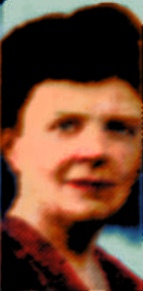
I DARE SAY —
Recorded in blood
By Florence Fisher Parry
I saw a newsreel of the liberation of Paris. I heard on the radio the actual record of it. Shots upon Gen. de Gaulle at Notre-Dame; the hysteria of the people. And from day to day, I read small scattered inside-page items of how the Maquis of France, the French Forces of the Interior, are taking their own way of settling their score with the trapped Germans.
I read the lists of books that are published, dozens, hundreds of books about this war, first-hand reports, magnificent fiction, diaries, poems.
Suddenly there is a flood of newsreels at last released by the United States Army to the motion picture exhibitors who, all through this war, were not able to procure the news films that had been made and were still being held back. The Army and our government offered the excuse that it would be bad om the morale of trainees in the audience.
Now that the invasion of France is nearly over, now that the landings at Tarawa, Saipan are old stories, now with the end of the war imminent in Europe, suddenly we are seeing what we had a right to see months ago.
How much promotion money has been spent on our various War Bond drives? Millions, millions; and at the very time when the showing of realistic and timely newsreels of our boys as they fought in the Southwest Pacific, as they fought in Africa and Sicily and Italy and last Normandy, would have done more to storm our hearts and open our purses and crack our savings banks than all the Mardi Gras stunts and stump speeches and bands and movie appearances and lunches and banquets and benefits could ever have done!
The great performance
But what the newsreel failed to do; our reporters certainly made up for. Never have there been such magnificent dispatches from the combat areas.
As for the book publishers working under similar paper restrictions, they have put forth a produce of war literate that is simply magnificent. This is all the more remarkable because no one, so well as publishers, knows how quickly the reading public is through with war literature when war ends.
Yet on the very eve of Germany’s collapse, every major publisher in America is putting forth war books and still more war books! It is of some of these that I should like to speak now, for unless they are read now, they are likely to be missed and join the innumerable host of war books which came too late and missed their earned immortality.
Already World War II has given us a few really distinctive books: Limit of Darkness by Howard Hunt – just a story of one day in the lives of a group of American fliers at Henderson Field on Guadalcanal is one. Another is A Walk in the Sun by Harry Brown. It, too, is a report, in fiction form, of a torturous landing of a leaderless platoon and its making its way six miles inshore to a farmhouse. Both of these are small books. Each can be read in an hour. They have in them the elements of lasting literature. Others are A Bell for Adano, by John Hersey, and The Moon Is Down, by John Steinbeck.
The moving finger writes
Too, there have been some of the columns of Ernie Pyle which have in them the sudden impact of reality that makes you know, as you read them, that you cannot forget, not ever, what they have written.
But really great novel about this war has not been written.
Kay Boyle has written some good short stories about this war. Rebecca West, too, has managed to set down a very live record of a dangerous day, and even Katherine Anne Porter, in her new collection of stories The Leaning Tower, tells a story about Germany that will keep haunting the reader years after it is read.
I have just read a book, Still Time to Die, by Jack Belden – horrific, burning, alive with death and menace.
I want to live long enough to read what some of these survivors, now 20, 22, will write at 40, at 50, about World War II, unless, of course, they are too busy writing letters to their sons in World War III.
